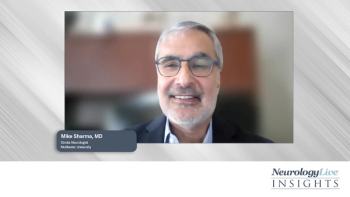
Nerivio® REN Wearable Delivers Consistent Drug-Free Relief Over Three Years, Study Shows
Key Takeaways
- Theranica's Nerivio® REN wearable showed no tachyphylaxis over 3 years, maintaining consistent treatment intensity and effectiveness for migraine relief.
- Both youth and adult participants experienced stable pain and functional disability relief, with no need for increased stimulation intensity.
A new study confirms the Nerivio REN wearable provides long-term, drug-free migraine relief without dosage increases, ensuring consistent effectiveness over three years.
In a prospective, real-world cohort study, Theranica’s Nerivio® remote electrical neuromodulation (REN) wearable highlighted the sustained long-term treatment effect without evidence of tachyphylaxis, underscoring the device’s long-term durability, safety, and continued effectiveness as a migraine treatment.1 Published in Headache, the study lasted 3 years with the primary endpoint defined as the lack of tachyphylaxis.
The trial analyzed data from 224 patients with migraine in the United States who used the REN wearable device monthly to treat their attacks over a 3-year period, from December 2019 to September 2024.2 Tachyphylaxis, the primary endpoint, was defined as an increase of no more than 2.5 intensity units on a 100-unit scale between 2 consecutive years, representing a non-clinically meaningful change in treatment intensity over 3 years. Secondary endpoints evaluated the effectiveness in at least 50% of treatments and consistent utilization, compared over 3 years. Safety outcome assessed the proportion of users with device-related adverse events (dAEs) and measured the severity and seriousness of the events.
Findings from the study indicated that treatment with the REN wearable device did not lead to tachyphylaxis over 3 years, with no clinically meaningful change in treatment intensity. Overall, the average treatment intensity between 2 consecutive years was no more than 2.5 intensity units (1.8 [±5.5] between years 1 and 2, and 1.4 [±5.3] between years 2 and 3; P = 0.120, McNemar test for two related dichotomous variables).
In the study, both youth and adult participants maintained stable therapeutic outcomes, with pain relief consistently reported by 72% and 77% of users and functional disability relief reported by 65% and 71%, respectively. Notably, these rates did not decline over time, and patients did not require higher stimulation intensities or treatment adjustments to achieve them.
"The publication of this multi-year, month-by-month, real-world evidence study in Headache marks a watershed moment in migraine care," Alit Stark-Inbar, PhD, corporate vice president of medical information and research at Theranica, said in a statement.1 "The results show that REN therapy provides consistent, long-term effectiveness without the need for a dosage increase over time, alongside sustained adherence to therapy, giving healthcare providers confidence in prescribing a proven, drug-free treatment."
For context, the Nerivio REN wearable is an acute and preventive prescription migraine treatment that works without drugs, needles, or invasive procedures. Instead, the device uses electrical pulses on the arm to activate the brain's natural pain regulation system, relieving migraine symptoms during an attack, and reducing the frequency and burden of future episodes when used preventively. Controlled by a smartphone app, the Nerivio REN wearable offers a safe, effective, and easy-to-use way to manage migraine—without the risk of systemic side effects or drug interactions
READ MORE:
These long-term findings follow a
All told, the study found that early initiation of Nerivio treatments yielded higher responder rates than later treatments (P < .001, significant following Bonferroni correction for multiple comparisons) on migraine outcomes. The symptoms monitored and compared included pain relief (65.1% vs 46.6%; Δ = 18.5%), pain freedom (28.8% vs 14.5%; Δ = 14.3%), functional disability relief (58.1% vs 49.3%; Δ = 8.8%), functional disability freedom (35.4% vs 20.9%; Δ = 14.5%), freedom from photophobia (26.9% vs 19.0%; Δ = 7.9%), phonophobia (34.0% vs 25.9%; Δ = 8.1%) and nausea/vomiting (51.5% vs 38.7%; Δ = 12.8%).4
For more headache and migraine coverage,
REFERENCES
1. Theranica's Nerivio® REN Wearable Featured in Headache for Delivering Effective, Consistent Drug-Free Relief in Migraine Over Three Years. Theranica. News Release. November 12, 2025. Accessed November 14, 2025. https://www.prnewswire.com/news-releases/theranicas-nerivio-ren-wearable-featured-in-headache-for-delivering-effective-consistent-drug-free-relief-in-migraine-over-three-years-302612069.html
2. Nahas S, Birlea M, Stark-Inbar A,. Et al. Three years of remote electrical neuromodulation (REN) acute treatment for migraine shows consistent effectiveness and no tachyphylaxis phenomenon. Headache. 2025;000-10. Doi10.1111/head.15069
3. Theranica's Nerivio REN wearable validated in landmark 55,000-patient study published in Cephalalgia. Theranica. News Release. October 28, 2025. Accessed November 4, 2025. https://www.prnewswire.com/news-releases/theranicas-nerivio-ren-wearable-validated-in-landmark-55-000-patient-study-published-in-cephalalgia-302596007.html
4. Ailani J, Tomaschek I, Stark-Inbar A, Shmuely S, Ironi A, Lax DN. The effect of treatment onset time on acute efficacy in migraine patients treating with remote electrical neuromodulation (REN). Cephalalgia. 2025;45(10):3331024251370696. doi:10.1177/03331024251370696
Newsletter
Keep your finger on the pulse of neurology—subscribe to NeurologyLive for expert interviews, new data, and breakthrough treatment updates.



































